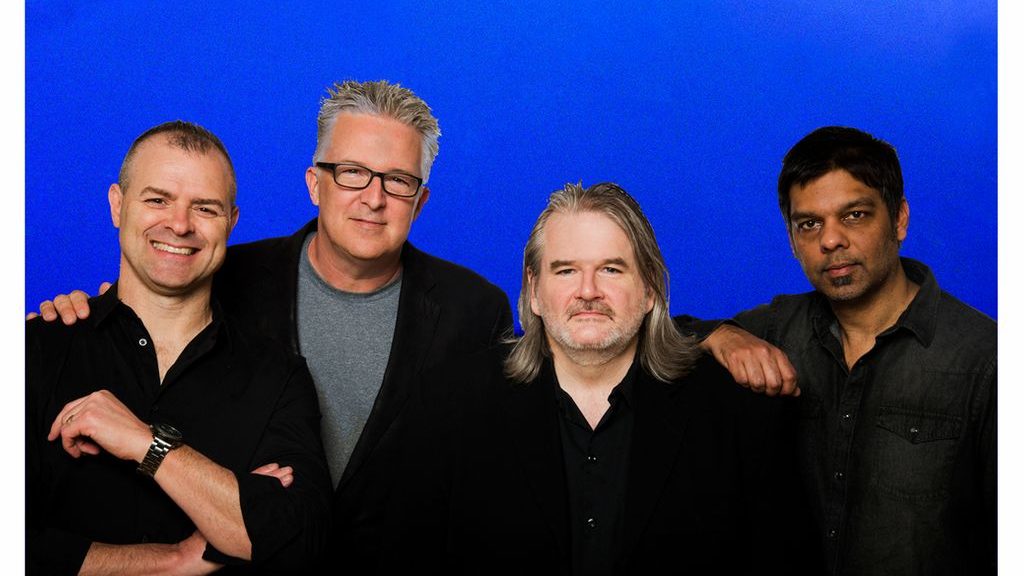Don, longevity is a rare attribute in the music world. With your band Monkey House you have been active for over 25 years now. Would you have thought in 1992 that the “studio project” could last that long?
Well, 25 years is a good run for any band, but if you’d asked me in ’92, I actually might have said yes, just because I’m such a compulsive songwriter — I knew we’d never run out of material! I’ve been writing songs with no real break since I was in the ninth grade
With “Friday” you have released your fifth studio album. And many fans and critics call it one of your best works. Is it maybe because drummer Mark Kelso, bassist Pat Kilbride, guitarist Justin Abedin and you have grown into a real band over the years?
That’s part of it, for sure. The initial idea of Monkey House was that I would write until I had an album’s worth of material, then cast each song almost like a scene in a movie, without regard for how many people constituted the band proper. That continued for the first few albums. But eventually, maybe inevitably, a core group started to emerge. As early as “Headquarters”, you had Mark and Pat locked in, then, as of “Left”, Justin became the core guitarist. It helps me to feel like we’re really a quartet, and to know the exact capabilities of the players. Mark and I have been playing together since 1982! The other reason we’re getting so much over-the-moon feedback on “Friday” is simple: I think it’s the best, most unified batch of songs we’ve had so far.
What do you think characterizes your band chemistry?
The band is the perfect combination of super methodical and detailed in the planning stages, plus super loose and spontaneous during the actual recording. My demos and charts are very specific, but once everyone has internalized them, they bring their own points of view. It’s very fluid in the studio. We let things happen, we make discoveries, we laugh our asses off! And one of the things that makes that confidence and looseness possible is the rock-solid technical team: my co-producer and label exec Peter Cardinali, and my longtime audio engineer John Bailey.
When you listen to the twelve songs on “Friday”, the album seems to be made out of one piece – even though there are enough musical twists and turns to keep things interesting. Is there a certain concept behind the album?
It’s funny how every album has its own fingerprint. They all sort of feel like concept albums when they’re done. The unifying concept might be a certain late-night perspective: the guy up late hammering out his 10,000 hours, the conspiracy guy up late in his garage, the jazz fan up late with his record collection, and of course New York, the city that never sleeps. The cover photo, “Times Square, 1958” by the late Pete Turner, was a real inspiration. I’ve known for a couple of years that that was going to be the cover.
How did the album get its name?
I noticed that “Friday” had come up naturally in a couple of the lyrics, and thought, hmmm, maybe there’s a title there. Then it started to feed its way into the whole album. Friday night is when the pressure comes off, when people have the time and space to be truly themselves. Friday is the sixth day of the week, and this is our sixth (well, fifth-and-a-halfth) album. Also, I was born on a Friday. That’s all after-the-fact stuff, though — I really just like the word.
Collaboration has always been important to you. As on the previous albums you have gathered exquisite musicians around you. Just to name a few of the contributors: guitarist Drew Zingg (Boz Scaggs), trumpeter Michael Leonhart (Steely Dan), François D’Amours (Gino Vannelli) and Snarky Puppy guitarist Mark Lettieri – not to forget The Manhattan Transfer, who sing the choruses of “The Jazz Life”. Was it difficult to win everyone for the project?
No, not difficult. The only guest I hadn’t worked with before was Mark Lettieri. Michael Leonhart and Drew Zingg have contributed to the last three Monkey House albums. François and I worked together on one of Chris Smith’s albums, and we have a million people in common in Toronto and Montreal. The Manhattan Transfer have been Monkey House fans for a few years now, and I’ve played live with them, as well as co-writing a song for their last album, The Junction. Vocalist Lucy Woodward made a major contribution to Left, and she’s a fellow Los Angeleno, so it was natural to have her back. In the case of Lettieri, I’m just such a mad Snarky Puppy fan that I reached out to him with “10,000 Hours” and he dug the track. My pal (bassist) Peter Murray, who has subbed with Monkey House live, connected us.
According to which criteria do you choose the musicians? Or in other words, do you already have certain artists in mind when you write your songs?
Generally not, although I’ve gotten into the habit of putting Michael Leonhart on our New York-themed songs, since he’s a born-and-bred New Yorker and completely gets the bag. I never have to explain anything to him. And with Drew Zingg, I’m always tempted to give him the solo with the craziest chord changes, because he plays with such beautiful linear logic over changes. That’s why he ended up on that constantly shifting middle section of “Nine O’Clock Friday.”
Co-producer Peter Cardinali and engineer John ‘Beetle’ Bailey were also on board again. Do you appreciate a familiar environment at work?
Those guys are just so bananas-good, it’s hard to know where to start. To have people on the technical side who also understand the music down to the smallest nuance — well, that’s rare.
Don, please tell us a little bit about the recording process. How long did you work on “Friday”?
I started writing songs for “Friday” the day “Left” came out in 2016, so I guess that’s about three years from first lyrics to final master. A lot of the heavy lifting is me solo: doing demos, rewriting lyrics (on planes, in hotel rooms, wherever), trying things. Then the core band cuts the bed tracks — basic tracks if you’re American — and I live with those for a while before I do vocals, write the horn charts, and undertake all the overdubs. Mixing takes weeks, although that’s usually spread out over a few months.
With “Book Of Liars” the album contains a musical bow to Walter Becker, who unfortunately died two years ago. As a big Steely Dan fan the news must have hit you hard back then.
Yeah, that was a body blow. Becker and Fagen have been at or near the centre of my musical life since I was a kid. I remember pulling my bicycle over to the side of the road the first time I heard “Reeling in the Years” — I held my transistor radio up to my ear, and the heavens parted! By way of a tribute to Becker, I thought it would be cool if we featured one of his solo tunes. I’ve loved “Book of Liars” since I heard it at Madison Square Garden in 1993, a year before it was released.
Did you ever meet him in person?
I met Becker briefly in New York City once. I’ve had much more substantial interactions with Fagen, including a two-hour, one-on-one interview for my Aja book (Vol. 46 of the 33⅓ series) in 2007.
Don, Steely Dan has been a central theme in your career since the beginning. What inspires you about their music?
Only everything! The literary slant and quality of the lyrics, the grooves, the blues-based pop constructions, the giant harmonic palette, the phenomenal sonic clarity, the unflinching integrity.
In general, your music is very much influenced by the L.A. Sound of the late seventies and early eighties. What characterizes this music epoch for you?
Well, as Mark Ronson recently observed, it doesn’t get better than that era, when multitrack recording was at its peak. “Pure solid-gold crispness,” I think he said. There were real budgets, everybody could read and play and sing their asses off, and nobody was scared of big, fat chords. Those records just don’t age!
One message that has excited West Coast music fans on both sides of the Atlantic has been the news that Monkey House will be touring for the first time. Why did you decide to take this step now?
It has to do with what we were talking about earlier — the fact that Monkey House feels like a real band now. It’s going to be expensive, but we want to do shows everywhere we have a following, and that means Europe and Japan too. The record release show we did in Toronto in July as a seven-piece sounded great, and JAZZ.FM91, which is an incredible full-time jazz station there, recorded it for a future broadcast.
Don, “Our aim is to make the world more beautiful than it was when we came into it”, wrote Kurt Vonnegut in “Welcome to the Monkey House”. A credo that can be very well transferred to your band Monkey House. Can we expect more music from you in the coming years?
Oh hell yeah! I’ve already written three songs for the next album. “Friday” debuted at #1 on iTunes, and at #11 on Billboard, and the double vinyl version went to #1 in its category at amazon. The audience just keeps growing. As long as there are people out there who like their pop with a few extra chords, Monkey House will be making records!
Don, thank you very much for the interview!
Anytime, Thomas!
Photo: Monkey House
This interview was published for the first time on August 31, 2019

